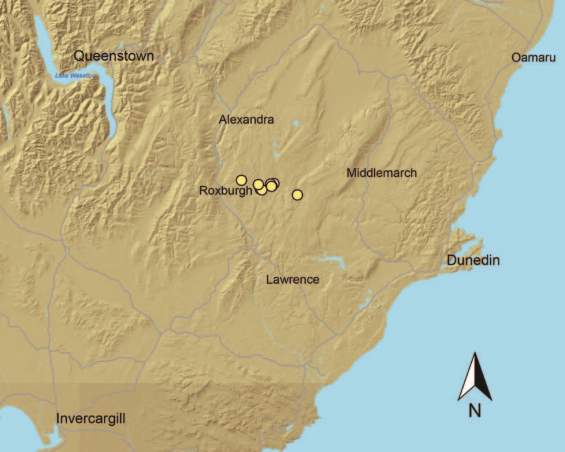With only a handful of remaining populations, Teviot flathead galaxias are becoming increasingly rare.
Classified as ‘Nationally Critical’, they share the same threat status as the kākāpō, making them one of New Zealand’s most endangered galaxiids.
Teviot flathead galaxias factsheet (PDF, 789K)
Meet Teviot flathead galaxias: Conservation blog post (June 2014)
Image gallery
Habitat
Teviot flathead galaxias (Galaxias 'Teviot') populations remain in just one area on earth – in a few headwater streams small enough to step across in the Teviot River, surrounding Lake Onslow.
Their total remaining habitat can fit in an area less than a hectare.
Features
Features of Teviot flathead galaxias include:
- hardy fish withstanding both snowy winters and hot, dry summers
- solid tubular body with relatively large eyes and burly fins; when you place a young Teviot in your hand it will crawl across it like a lizard, using its strong fins
- light-to-medium-brown terracotta colourings with dark-brown splotches and crescents
- their outer eyes and bodies have a gold dusting all over them
- typically grow to up to 160 mm in length
- difficult to spot during the day, hiding in tussock
- feed on small stream invertebrates such as mayflies and stoneflies
- spawn in spring (October to November), laying tiny 2 mm eggs during flood flows in streamside vegetation or small ‘caves’ in stream banks
- they can live up to 20 years.
This taxa is currently indeterminate and has not been formally described to date. Work is currently being undertaken to look into formal description.
Threats
Over the last decade, 3 out of 7 known Teviot populations have been lost. This can be directly linked to the spread of sports fish (trout and brook char), which eat galaxiids; and changes in land use such as stock access to streams, reduction of native vegetation, land development and forest harvesting.
These land use changes impact on the streams in which galaxiids live, increasing sedimentation, changing natural flows through water abstraction, and reducing the amount of habitat available for spawning.
Find out how you can help non-migratory galaxiids.
Distribution
This map shows the known locations of Teviot flathead galaxias, as at 2013.

Source: New Zealand freshwater fish database